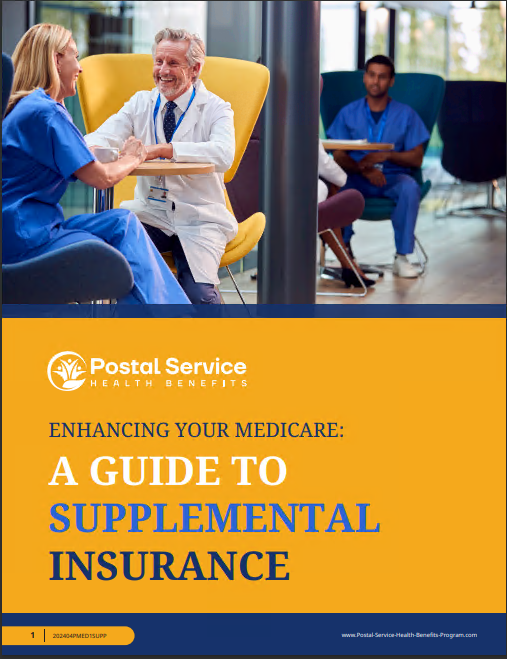Key Takeaways
- The Postal Service Health Benefits (PSHB) Program, set to begin in January 2025, will replace the current FEHB coverage for USPS employees, introducing new benefits tailored to postal workers.
- Despite differences in structure, the PSHB Program offers benefits comparable to the Federal Employees Health Benefits (FEHB) Program, with some unique features specific to the postal workforce.
USPS Workers, Here’s How the New PSHB Program Compares to Other Federal Health Benefits
The Postal Service Health Benefits (PSHB) Program is a significant shift for United States Postal Service (USPS) employees, annuitants, and their families. This new program, starting in January 2025, will replace the existing Federal Employees Health Benefits (FEHB) coverage for these groups. As USPS workers prepare for this transition, it’s important to understand how the PSHB Program compares to other federal health benefits to ensure that postal employees and their families are well-informed and can make the best decisions regarding their healthcare coverage.
Understanding the PSHB Program
The PSHB Program was established by the Postal Service Reform Act (PSRA) of 2022, which mandates the creation of a separate health benefits program for postal workers. The program will be managed by the Office of Personnel Management (OPM), similar to the FEHB, but will cater specifically to the postal workforce.
Beginning in January 2025, USPS employees and annuitants, who are currently covered under the FEHB Program, will transition to the PSHB Program. This change is designed to create a separate risk pool for postal workers, which is expected to result in more tailored benefits and potentially lower premiums for this group.
Key Features of the PSHB Program
One of the most notable features of the PSHB Program is its alignment with Medicare. PSHB plans are required to integrate with Medicare Part D, offering prescription drug coverage through a Medicare Part D employer group waiver plan (EGWP). This feature is unique to the PSHB and is designed to ensure that postal retirees who are eligible for Medicare receive comprehensive prescription drug coverage.
Another key feature is that while the PSHB plans will mirror the benefits of FEHB plans, they will be specifically adjusted to meet the needs of postal workers. This includes maintaining similar levels of coverage and cost-sharing structures, but with a focus on the specific health risks and needs of USPS employees. For instance, because the PSHB will have a postal-only risk pool, premiums might reflect the health experience of postal workers more closely than the broader FEHB population.
Comparison with FEHB Program
The FEHB Program has long been the standard for federal employees, offering a wide range of plans from different carriers. It provides a comprehensive suite of health benefits, including medical, dental, and vision coverage, along with options for flexible spending accounts and long-term care insurance.
Similarities Between PSHB and FEHB
The PSHB Program will retain many similarities with the FEHB Program. Both programs will continue to offer a wide range of health plans, ensuring that USPS employees and retirees have access to comprehensive medical coverage. Moreover, the government’s contribution to premiums under the PSHB will remain consistent with that of the FEHB, meaning that the financial impact on USPS workers should be minimal.
Furthermore, like the FEHB Program, the PSHB will allow enrollees to cover eligible family members, ensuring that dependents of USPS workers can continue to receive health benefits.
Differences Between PSHB and FEHB
Despite these similarities, there are notable differences between the PSHB and FEHB Programs. One significant difference is the creation of a separate risk pool for postal workers under the PSHB Program. This separate risk pool is expected to provide benefits that are more closely aligned with the specific health risks of postal workers. Additionally, the integration with Medicare Part D for eligible retirees is a new requirement under the PSHB, which does not apply to the broader FEHB Program.
Moreover, the PSHB will offer plans that are exclusively available to USPS employees and retirees. These plans may have different provider networks and formularies compared to FEHB plans, which could impact the choice of healthcare providers and medications available to enrollees. Therefore, it will be crucial for USPS employees to review their options carefully during the Open Season to ensure that they select the plan that best meets their healthcare needs.
Preparing for the Transition to PSHB
The transition from the FEHB Program to the PSHB Program is scheduled to begin with the Open Season in late 2024, where USPS employees and retirees will have the opportunity to select their new PSHB plans. It is important to note that those who do not actively choose a plan during the Open Season will be automatically enrolled in a PSHB plan, ensuring that there is no gap in coverage.
To prepare for this transition, USPS employees and retirees should start familiarizing themselves with the PSHB options as soon as possible. The OPM, in collaboration with the USPS, has been providing informational resources and fact sheets to help employees understand their new benefits and make informed decisions. Additionally, attending informational sessions or consulting with a licensed insurance agent can provide valuable guidance during this transition period.
What USPS Employees Should Consider
As USPS employees consider their options under the new PSHB Program, several factors should be taken into account:
- Healthcare Needs: Evaluate the healthcare needs of yourself and your family members. Consider the types of medical services, prescription drugs, and specialist care that you may require, and review the coverage offered by different PSHB plans to ensure they meet these needs.
- Provider Networks: Check whether your preferred healthcare providers are included in the networks of the PSHB plans. If maintaining your current doctors and specialists is important to you, this will be a crucial factor in your decision.
- Costs: While the government’s contribution to premiums will remain consistent, the actual cost of premiums, copayments, and deductibles may vary between PSHB plans. Compare these costs to determine which plan offers the best value for your situation.
- Medicare Coordination: For retirees who are eligible for Medicare, it is important to understand how the PSHB plan will coordinate with Medicare coverage, particularly regarding prescription drug benefits. The automatic enrollment in the PSHB’s Medicare Part D EGWP should be reviewed carefully to avoid any surprises.
The Road Ahead for USPS Workers
The launch of the PSHB Program marks a new chapter in healthcare benefits for USPS employees and retirees. While the transition to a new benefits program can be challenging, the PSHB is designed to provide robust coverage that addresses the specific needs of the postal workforce. By taking the time to understand the differences and similarities between the PSHB and FEHB Programs, USPS workers can make informed decisions that will ensure their continued access to quality healthcare.
As the Open Season approaches, staying informed and seeking advice when necessary will be key to navigating this transition smoothly. The OPM and USPS will continue to provide updates and resources to assist employees and retirees throughout this process.
Moving Forward with PSHB
As USPS workers prepare for the shift to the PSHB Program in 2025, it is crucial to stay engaged and informed. Understanding the specifics of the new program and how it compares to the traditional FEHB Program will empower employees and retirees to make the best choices for their health and financial well-being.
Contact Information:
Email: [email protected]
Phone: 5058593114






